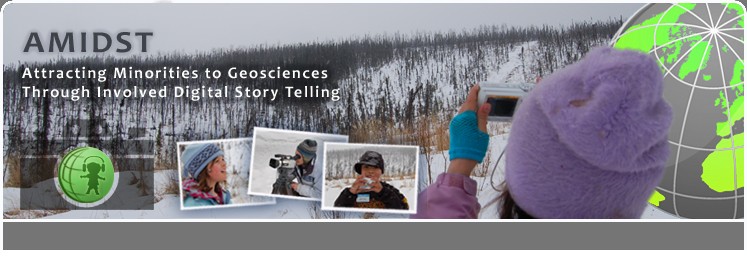

|
Assessment
AMIDST: Evaluation and AssessmentEvaluation, as used in the context of the AMIDST project, refers to the ongoing process of measuring progress against expected outcomes at all stages of the project. As the focus is on timely qualitative and quantitative measures, achieved by comparing data to a standard or a stated objective for the purpose of judging worth or quality, evaluation is primarily formative in nature. However, we do have summative evaluation as well.Assessment, as used in the context of the AMIDST project, is a summative or final measurement of activities or competencies against established criteria. It refers to the collection of data to describe or better understand an issue. For more information on education evaluation and assessment, refer to the ESSE Evaluation Toolkit. Evaluation and assessment for the AMIDST project was carried out by Cheryl Cooper (Alaskan resident) in consultation with Roger Levine (NSF Education Project Evaluator). Evaluation / Assessment ToolsWe first used diagnostic evaluation surveys to gauge the content knowledge, attitudes, perceptions and expectations of the participating students and teachers. This helped to get a good sense of how to tailor or content material to meet the needs of our target audience.We later used the same set of questions in a summative assessment surveys to assess the change in content knowledge, and also in the participants' belief system and perceptions.
Summary of Significant ResultsStudents, from Fairbanks and Nome alike, showed statistically significant increase in geoscience content knowledge and reflected a favorable attitude toward science. There was fluctuation in attitude towards storytelling. Some students did not like the 'actual writing' of the story, while some others were shy and were not very excited about performing the story. Teachers were exposed to geosceince concepts, media literacy, integrating story telling in the curricula, cultural perspectives, and digital techniques, all in a very short time. This was a bit too intense. Teachers showed the greatest increase in the area of knowledge about implementing digital story telling in a classroom environment. Though teachers and project scientists were overall happy with the learning experience, our sample size for teacher groups was very small to be able to confidently claim the statistical significance of the teacher training results.Moderated focus group with the students involved a voting by show-of-hands on different elements of the project.
Selected Participant Opinions 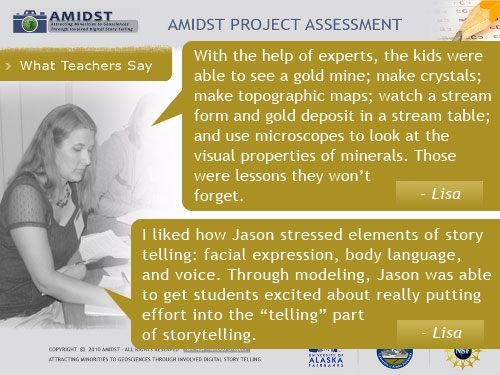 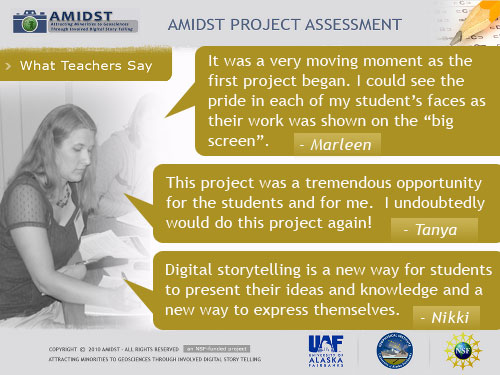 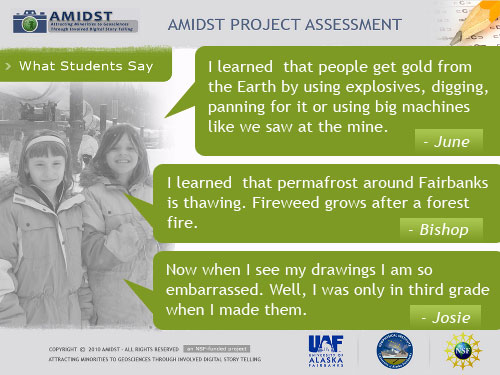 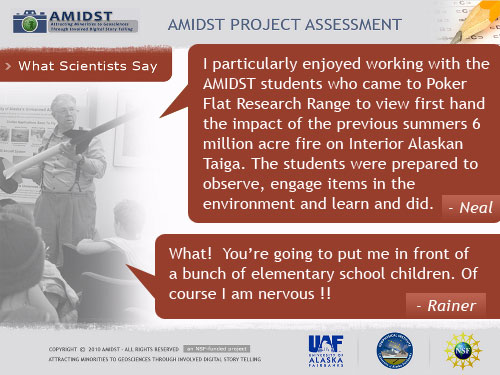 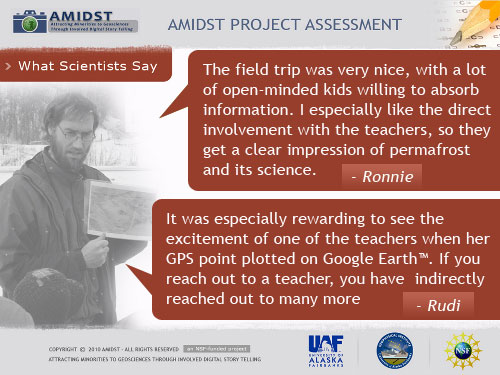 Lessons LearnedThough some of the points presented here may intuitively appear as obvious, this is a valuable summary of our learning experience in implementing the NSF OEDG Track 1 (proof of concept) AMIDST project
|